The Mexican States of Quintana Roo, Campeche, and Yucatan make up what is popularly known as the Yucatán Peninsula. In December 2014 and January 2015 Rebecca and I (and friends) made the great loop of the outside region of the peninsula. Photographs of birds, other natural history, and modern human history from this trip are in the Campeche photo gallery. Video can be found in the Birds of Mexico video portfolio.
As might be expected, I visited many Mayan and early Spanish sites on this trip. Photographs of these sites/material can be found at the Ancient Peoples website (www.ancientpeoples.org).
THE FOOD
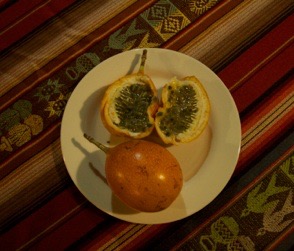
In general, and generally at meal time, I develop an intense interest in food. And, I have noted through years of experience, food is even better when it tastes good. (At this point, I must confess that I was never - among many other things - cut out to be a restaurant reviewer.) The food I ate in Yucatán was always (at least) okay and often very good. Seafood is fresh in Yucatán and often very tasty. In particular, various fish fillets prepared in garlic sauce or grilled, shrimp in butter or garlic sauce, and ceviche stand out in my memory as especially good. In fact, the very large dish of ceviche I had at the Restaurante Las Chachalacas (just north of Felipe Carrillo Puerto in Quintana Roo, on the south bound lanes of Mexico 307) is the first of three dishes I note in particular from my trip. The second selection is the Mango and Passionfruit Tarts which Rebecca and I had in Merida at the Botella Verde restaurant in the corner of Parque de Santa Lucia (Calle 55/Calle 60). What really made it wonderful was the passionfruit sauce and toasted passionfruit seeds. (I took the photograph of a passionfruit, right, at a restaurant on the east slopes of the Andes in Ecuador. The waiter at Botella Verde said the passionfruit in our tarts came from Brazil.) And lastly, representing all of the barbecue grills in Yucatán is the restaurant on the south side of the road where Mexico 199 crosses the Rio Chacamax, south of Palenque in the state of Chiapas, across the road from the Nututun Palenque Hotel. The barbecue ribs we had there were outstanding - to the point of eating way to much.
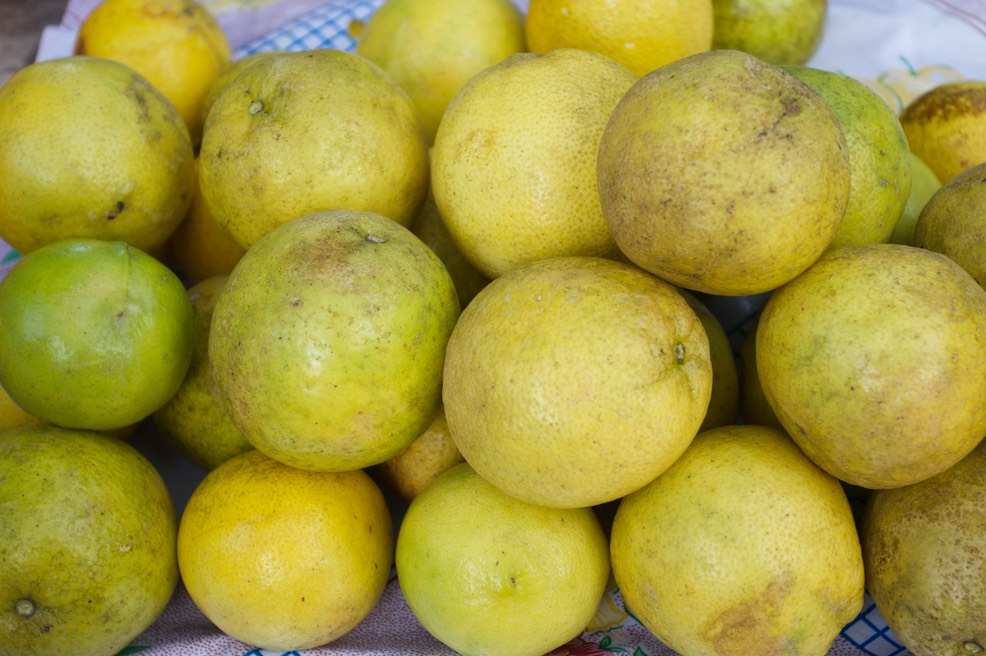
Parque Nacional Agua Azul, Chiapas, Mexico
In total, I must say that the best food I had was in the small restaurants along the road. Forget the guide book recommendations and strike out on your own, you will be amply rewarded.
I really did not anticipate encountering a food I was not familiar with on this trip. But I did. Citrus limetta (photo above), is called by a variety of names around the world but referred to in Chiapas as “lima”. It is not a lime and it is not a lemon. The term “lima” might lead you to conclude that it is a lime, limes are referred to as “la lima” in most of the spanish speaking world. It Mexico, however, they are called “el lemón”. So get over it, it ain’t no lemon and it ain’t no lime. In most of the world this food is called “sweet lime” and it is generally used to make juice. Its taste is quite bland, very low in acidity, and it is probably best used to make juice.
In Campeche we searched out a place which served chocolate, hoping to replicate our experiences in Oaxaca where the chocolate is wonderful. Alas, a replicated experience was not to be had. The chocolate which I had in the Yucatán was not nearly as good as in Oaxaca. The cacao pods pictured to the right were photographed at a stand along the Rio Agua Azul in Chiapas, Mexico.
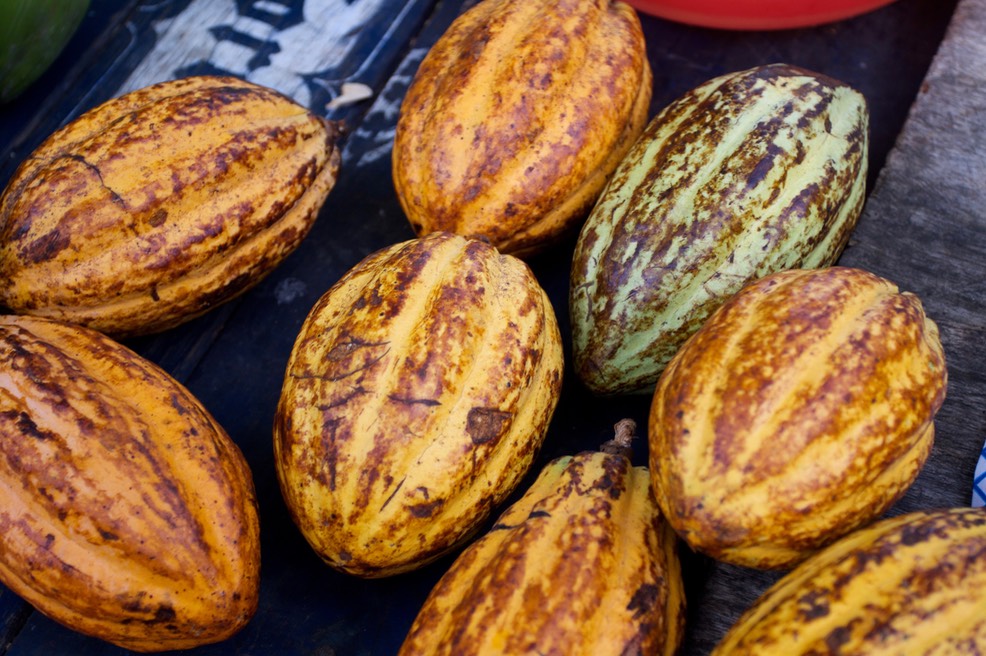
Parque Natural Agua Azul, Chiapas, Mexico
A BAT CAVE

When I was in the southern part of the state of Campeche I visited a “bat cave”. Mad music, flashing lights, and a futuristic car did not appear out of this cave, which was at the bottom of a sinkhole, at dusk. Thousands and thousands of bats did. (Reported by knowledgable people as roughly 2 million bats of eight species). Nothing good in the way of photographs but what a wonderful experience. Masses of bats swarming up out of the earth flying between my legs, past my ears and elbows, everywhere - swooping high and out across the canopy, dodging along the ground around trunk and limb, everywhere. Strangely it is an event which I have tended to forget but when I do remember, I remember it as the most unique experience of the trip. Video of the bat fly-out has been posted to the Mammals Video Portfolio.
CALAKMUL
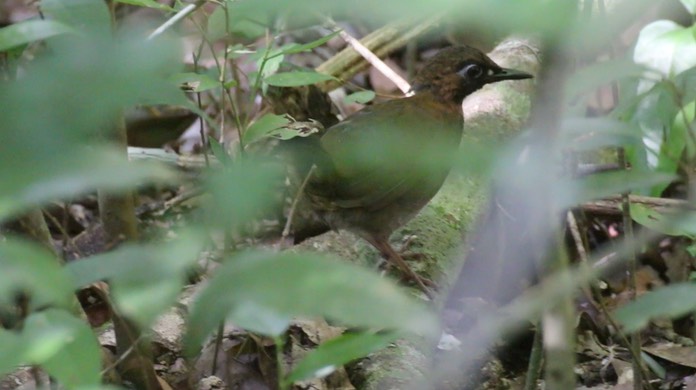
The Mayan ruins at Calakmul are in the southern part of Campeche, Mexico. They are only 22 miles from Guatemala and not much farther from Tikal, with which it was often in a power struggle. Calakmul is a very large site, with many structures - large and small. I took no photographs at Calakmul. I used our visit there to try for some mid-day forest birds (in the Mayan world view they are said to exist). The frame grabs shown here, the Mexican Antthrush shown right, the Brown Jay (next below right) and Keel-billed Toucan (bottom right) are from the limited video that I did manage.
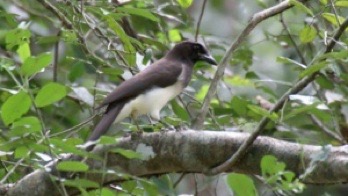
I saw two Great Curassows as I was roaming the forest, adding to various bites on my body. I was trying to negotiate a particularly dense tangle, something that is quite difficult when you are carrying a camera mounted on a tripod, when suddenly the two Curassows were there in front of me, within ten feet. It is an image that is imprinted in my mind, unfortunately I can not share it with you in any form other than word.
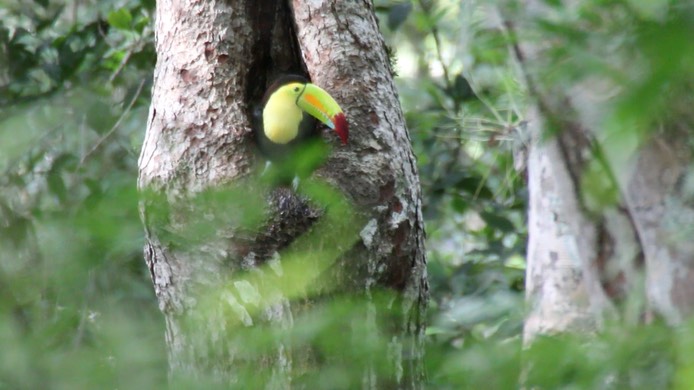
When I ventured back out to the trail system I mingled with the occasional Mexican (extended) families that were also visiting the site. Calakmul was somewhat more crowded than the sites we had been visiting - scores of people instead of none. It was absolutely empty when compared with the northern sites we visited later. I met a young Canadian/USA couple who were hitchhiking around the Peninsula, we had a long and enjoyable conversation about this part of Mexico and the birds I was seeing - her father was a birder and she wanted to report back on that topic. As we prepared to leave the site I found a Keel-billed Toucan nest (right photo).
But, perhaps, the most memorable Calakmul story happened yesterday. Here in our living room in Hillsboro, New Mexico, USA. We do minimal Christmas gift giving. The glorified consumerism which the holiday has come to symbolize is not something that we relish. What we often do is make charitable contributions. Choosing a charity a family member supports we make a contribution in their name, they are pleased, the charity is pleased, we are pleased. When Jon was about 14 we gave him a Kiva certificate. The Kiva charity makes loans (through various partners) to low-income folks throughout the world, the loans are low capitalization and are interest free or low interest (generally - it varies with partner). They provide a jump start for struggling people who have a (very) small business idea. The repayment record for these loans is very good (currently 98.77%). When the borrower repays the loan you can loan that money to someone else, and so the cycle grows. This year we received a Kiva certificate from Jon with the message; "Happy X-Mas. Years ago you gave me some Kiva money. I have reloaned that same amount of money many times as people paid back my loans. I wanted to share that wonderful gift with you." We were so happy to receive that gift and knowing what it had meant to him made me remarkably proud of him and the way he views the world. We went exploring the Kiva site and found a beekeeper in Calakmul who needed a loan to buy more hives. I may have talked to this guy and it is very likely that I saw his beehive boxes hanging from the trees as I walked along the road leading into Calakmul on a day the rest were visiting the museum near the site. I wondered at the boxes hanging from yellow ropes twenty feet or so above the road until I figured out what it was all about. Made perfect sense. So we made a loan to help make honey in Calakmul (followed by a biogas generation loan by Rebecca because it caught her eye). That my friends is a story. One worth remembering.
CAMPECHE CITY
Campeche was once a walled city. Now the urban sprawl of modern Latin America surrounds the enclave of the old city - which is still bordered by walls at many points. A bronze replica of the old city and walls is, appropriately enough, visible from the top of one of the remaining wall sections. Below is a photograph of a section of wall and a portion of the old city that it currently stands guard over.

As with most old Spanish cities, the streets are narrow in the old portions of town (photo below) and one-way traffic grids are the norm. People and cars get along well in old town, no racing cars down narrow lanes - to much cross traffic, to many blind corners, and lots of cops. In addition, several of the streets have been turned into pedestrian malls, no traffic allowed, and that makes for restaurant tables in the streets and lots of public art (statuary). It appears to be a rather safe place, I had no qualms about walking about after dark, for instance.
The area west of the old walls, which once fronted the ocean, has been infilled and now is a major transportation corridor. On the other side of the roads, however, is a nice promenade along the ocean. We were in Campeche for a day and an afternoon. Rebecca and I managed two walks along the promenade during that time and among other things I took the photograph of the needlefish (pictured above) as we strolled in the afternoon - followed by a cold beer in a nearby restaurant.
Old Campeche is a charming city, with substantial lodging and restaurant opportunities - good infrastructure. I would not plan a trip around a return to Campeche but if I found it on my route sometime I would not mind at all...
CELESTÚN & PARQUE NATURAL DEL FLAMENCO MEXICANO
The beach and ocean were not the focus of this trip, so we didn’t see the ocean, or a beach, until we had lunch on the beach south of Campeche, on our way north. The other opportunity for the ocean and beach occurred at Celestún which we traveled to after leaving Uxmal, arriving there in late afternoon. A room in a small hotel on the beach with the sound of waves all night was a definite change from other locations on our trip. We remained in Celestún the following day and left for Mérida the morning after that.
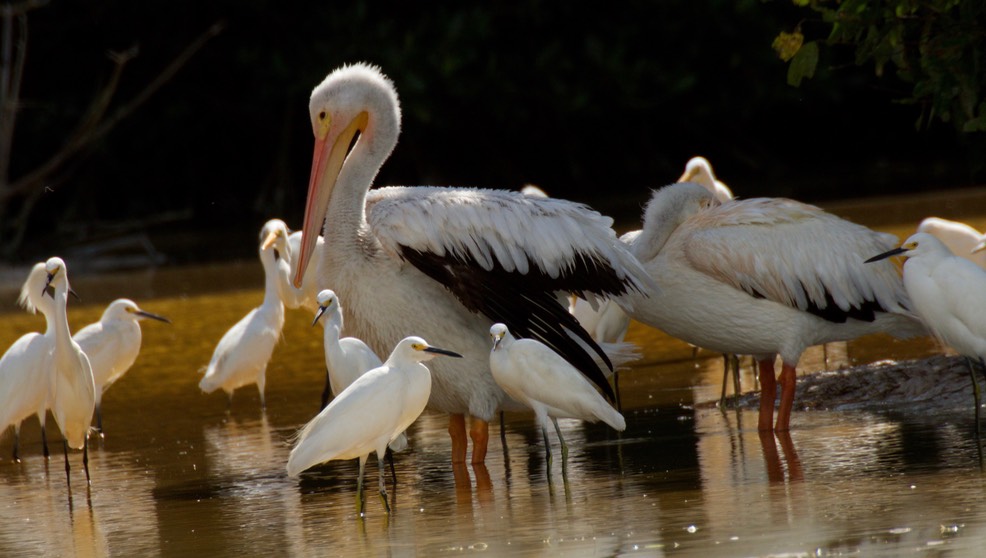
American White Pelican,
Pelecanus erythrorhynchos
Snowy Egret, Egretta thula
Reserva de la Biosfera Ria Celestun, Yucatán, Mexico
For me, the attraction of Celestún was not the beach, nor the ocean, not even the seafood. During the winter American Flamingos, Phoenicopterus ruber, are found in the estuaries at Celestún. I had eagerly anticipated the opportunity to see them from the moment we started to plan the trip. Not only are these birds beautiful but their range is limited. I had seen the three other Flamingo species of the New World; Chilean, James’s, and Andean, in the high Andes - now I had the chance to see the Greater where it was warm. Many people think of Flamingos as African species and it is true that two of the six extant Flamingo species are found in Africa, the other four are limited to the Americas. In fact, four of the seven extinct Flamingo species were found only in the Americas. Flamingos are, primarily, a species of the Americas.
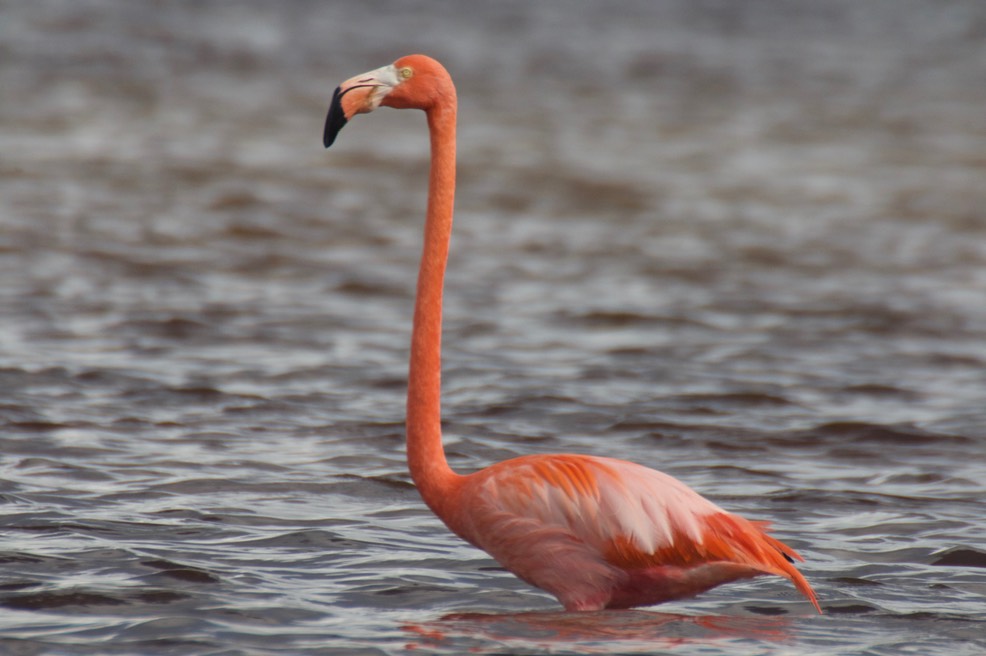
American Flamingo, Phoenicopterus ruber
Reserva de la Biosfera Ria Celestun, Yucatán, Mexico
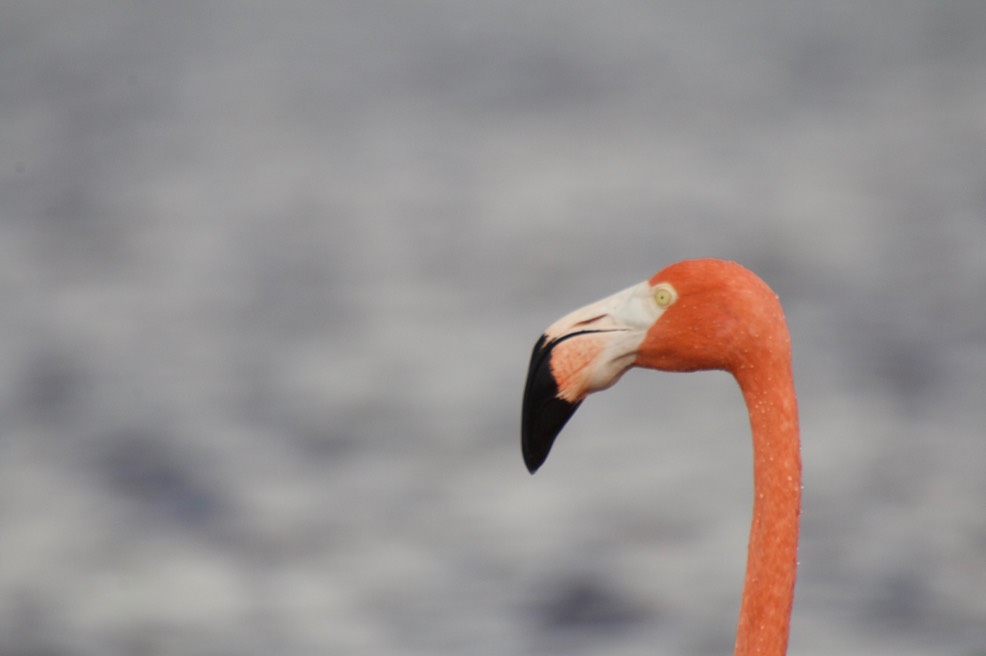
It seems that everyone in Celestún was trying to hawk a boat ride to see the Flamingos. On the morning of our full day in Celestún we went to the edge of town and rented a tourist boat for our party and went off to see Flamingos. I had assumed that the video I would get would be poor, video from a boat, especially when there is a bit of chop in the water never works. But this was, I thought, the only chance I would have so I took what I could get. The American Flamingos were magnificent. The ride through a channel in the Black Mangroves was nice and toward the end there was a small mud beach with an assortment of birds (photo above of American White Pelican and Snowy Egrets - photos below of Black-necked Stilt, Great Egret, and Roseate Spoonbills).
Black-necked Stilt, Himantopus mexicanus
Reserva de la Biosfera Ria Celestun, Yucatán, Mexico
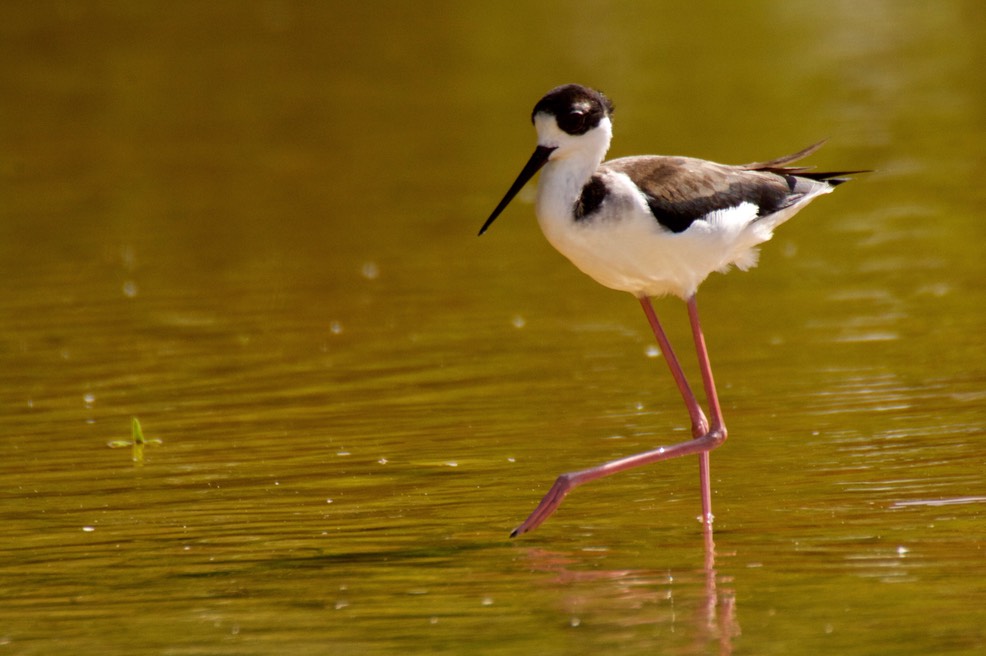
When we returned in mid-day I arranged for another boat in the afternoon. Three of us set off at 4:30 in one of the three-wheel tuk-tuk type vehicles - powered by a dissected motorcycle - which are prevalent in this part of Mexico. We drove out to the mud flats on the edge of the town and walked out to a canoe that the guy had. He then proceeded to pole us about the mud flat/estuary until dark. It was magnificent. American White Pelicans, Wood Storks, and at the very end Flamingos - which I could video from the land (as in no rocking boat).
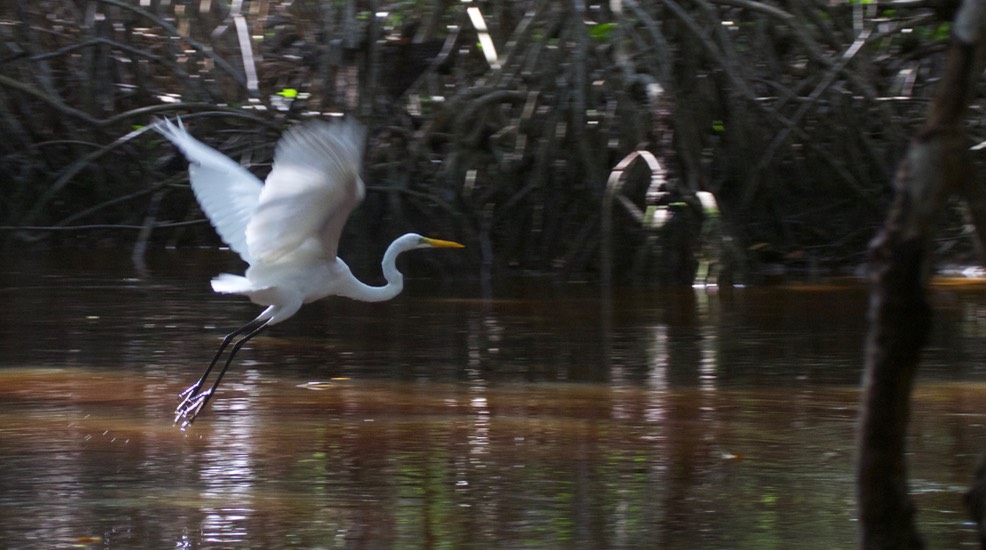
Great Egret, Ardea alba
Reserva de la Biosfera Ria Celestun, Yucatán, Mexico
Even given the fact that the birding/video was from a boat and boat drivers generally (and here, specifically) do not have a clue what the requirements are for video, this was a wonderful experience. Celestún is a location I would return to.
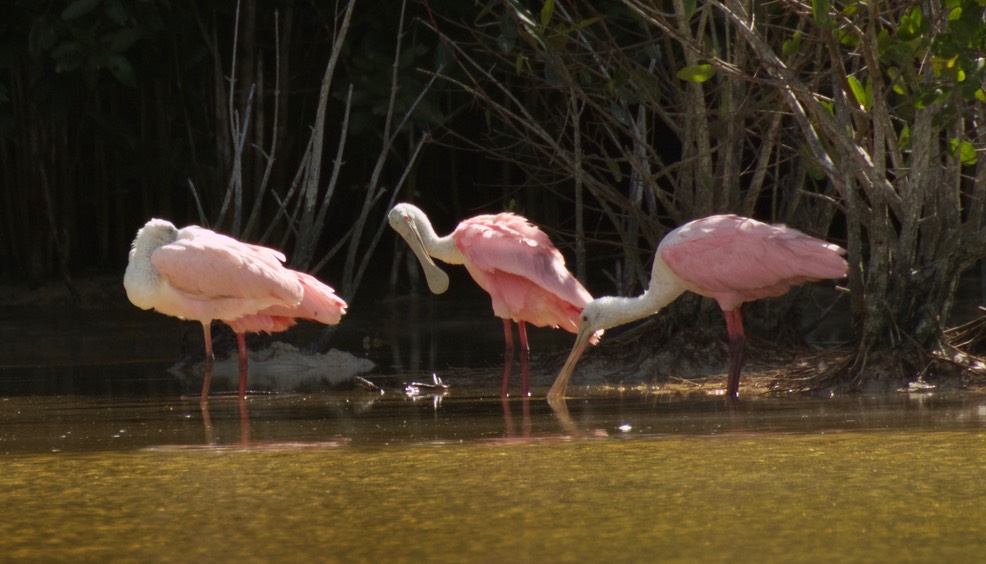
Roseate Spoonbill - Platalea ajaja
Reserva de la Biosfera Ria Celestun, Yucatán, Mexico